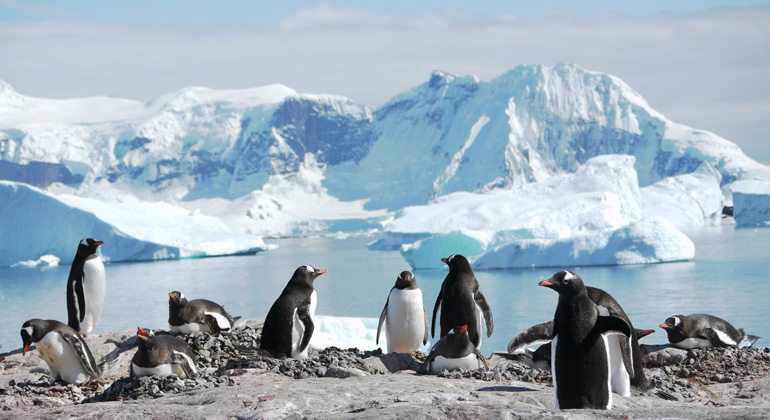Sea levels to rise 1.3m unless coal power ends by 2050, report says
University of Melbourne paper combines latest understanding on Antarctica and current emissions projection scenarios Crack in Larsen C Ice Shelf, Antarctica The extra contribution to sea level rise from Antarctica will not kick in if warming is kept at less than 1.9C above preindustrial levels, the researchers found.
Coastal cities around the world could be devastated by 1.3m of sea level rise this century unless coal-generated electricity is virtually eliminated by 2050, according to a new paper that combines the latest understanding of Antarctica’s contribution to sea level rise and the latest emissions projection scenarios. It confirms again that significant sea level rise is inevitable and requires rapid adaptation. But, on a more positive note, the work reveals the majority of that rise – driven by newly recognised processes on Antarctica – could be avoided if the world fulfils its commitment made in Paris to keep global warming to “well below 2C”.
Antarctic sea ice levels hit record low, but experts are not sure why Read more In 2016, Robert DeConto from the University of Massachusetts Amherst revealed that Antarctica could contribute to massive sea level rise much earlier than thought, suggesting ice sheet collapse would occur sooner and identifying a new process where huge ice cliffs would disintegrate. But that paper only examined the impact of Antarctica on sea level rise, ignoring other contributions, and didn’t examine the details of what measures society needed to take to avoid those impacts. The new paper by Alexander Nauels from the University of Melbourne and colleagues uses simplified physical models that allowed them to explore all known contributions to sea level rise, and pair them with the new generation of emissions scenarios which the Intergovernmental Panel on Climate Change (IPCC) will use in the next set of reports. Under all scenarios we are going to have to adapt Sea level expert John Church They found that if nothing is done to limit carbon pollution, then global sea levels will rise by an estimated 1.32m.
That is 50% more than was previously thought, with the IPCC’s AR5 report suggesting 85cm was possible by the end of the century. But the extra contribution from Antarctica would not kick in if warming was kept at less than 1.9C above preindustrial levels, the researchers found. Temperatures above that threshold risked triggering the additional processes in Antarctica identified in the 2016 paper, causing much greater sea level rise.
“The 1.5C limit in the Paris Agreement is a much safer bet to avoid this additional contribution than only achieving 2C,” Nauels said. The work, published in the journal Environmental Research Letters, showed that the current carbon reduction pledges which governments have made as part of the Paris Agreement by 2030 – their Nationally Determined Contributions (NDCs) – are so weak they would require very deep cuts between 2030 and 2050 to avoid triggering those extra processes in Antarctica. Since the authors used the next generation of emissions scenarios (the “Shared Socioeconomic Pathways”), which include assumptions about socioeconomic factors that are driving emissions – such as energy demand, energy generation, population growth and GDP – they were able to examine what actions could be taken to avoid the sea level rise.
Those scenarios suggested coal could only make up 5% of the world’s energy mix by 2050 if sea level rise is to be limited to about half a metre. Similarly, those scenarios suggested a global carbon price would have to be well over US$100 per tonne, since at that cost, sea level would rise by 65cm by 2100.
John Church, a leading sea level rise expert from the University of New South Wales who was co-convening lead author of the chapter on sea level in the third and fifth IPCC Assessment Reports, told the Guardian the work was further confirmation that the world needed to prepare now for substantial sea level rises. “Under all scenarios we are going to have to adapt,” Church said. “We cannot stop all sea level rise.”He said the research community was not in consensus yet about the accelerated contribution of Antarctica to sea level rise, identified in the 2016 paper and modelled in this study, but examining the implications of those findings was still important.
DeConto, the lead author of the landmark paper from 2016, said it was important to recognise the good news in his original findings and this extension of that work. Where global warming gets real: inside Nasa’s mission to the north pole Read more “In the aggressive mitigation pathways, where we assume that the global community gets its act together and we reduce emissions, it’s a much rosier picture.
There’s a much reduced risk of dramatic sea level rise from Antarctica,” he told the Guardian. “This study fully reinforces that.” Nauels said his team’s work assumed that Antarctica would contribute to sea level rise as was suggested by the 2016 paper by DeConto, but more work was needed to confirm those findings. “We still have to find out what’s going on in Antarctica,” he told the Guardian. “We can’t base all future sea level rise projects on just one paper. And the Antarctic ice sheet community are frantically working on the new insights.”
“Linking sea level rise and socioeconomic indicators under the Shared Socioeconomic Pathways”








